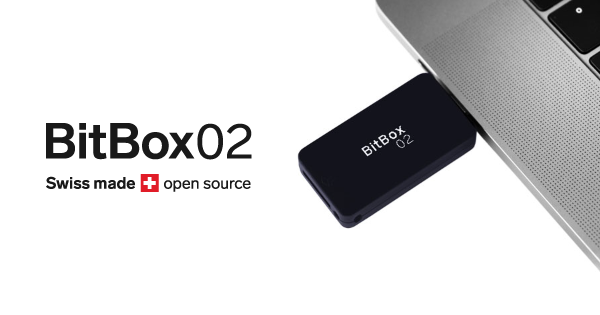Is Bitcoin Money?
Today’s post will highlight the monetary properties of Bitcoin. Before we can establish those, we have to take a look at what makes money money. We will also discuss what good money is and what bad money is. Money has three important functions. It acts as a store of value, medium of exchange and as unit of account. Money has taken many forms and shapes through the years, but it always ended up being corrupted or inflated to the detriment of those who have saved in that money.
So now let’s unpack the functions of money before we dive into a bit of a history lesson. When we engage in trade with others, we as humans first used barter. We exchanged a pear for an apple, a bushel of wheat for a chair, a cow for three goats and so on. Now what happens if I only want one goat. I can’t give the other person a whole cow because then I would massively overpay for the goat. What if I have a small cow would that be a more satisfactory trade? I also can’t really give away a third of a cow. I mean I could, but then we would only have its meat left and the cow would not give any milk anymore. Another issue would be if the farmer who wants to trade his goat might not need a cow in the first place but what he actually desires is some furniture for his house. We call this the double coincidence of wants. The more products there are the less likely you are to have that exact same product someone else would want from you and vice versa. As you can see there is a range of issues that we face when we engage in barter. Money is supposed to make this easier for us. Hence its function as a medium of exchange.
In addition to the functions of money we have the properties of money which enable the money to fulfil the three functions. The properties are durability, portability, divisibility, uniformity, limited supply, and acceptability. A cow is not very divisible and its portability is not optimal as we have to make the cow walk to the market for us to engage in trade. And its salability or its acceptance in the market might be low. Ok so now cows are out of the picture as a money. There is also a reason why we don’t use things like apples or fish as money. We would not want apples for our cow as the apples would rot away if we didn’t consume them within a few days. Also what stops anybody from just picking more apples and inflating the supply of apples, the same holds for fish. Even gold had its issues fulfilling all six properties well. It did very well on most parts but it's not easily divided or rather its value per unit is very high and hence it is difficult to use. Another point is that in the Information Age it became apparent that physical gold is too slow. That's when more layers were strung on top of gold which were based on credit. In the end our financial system was and is not based on gold but on credit.
We haven’t spoken so much about moneys function as unit of account. We need all these properties which we mentioned to have a unit of account. But the most important one is the limited supply as it makes an economic calculation almost impossible if the value of the money is not stable. Misleading supply of money and skewed interest rates are some of the sources of the boom and bust cycles as described in the Austrian business cycle theory.
Now that we know about the functions and characteristics of money, we can look at a couple of examples of monies which were used throughout history. Let’s start with seashells. They were used as money for some time, but they ran into the issue of not having a limited supply. A seashell is only rare in some areas like the desert. In other areas we can find them en masse. Through technological advancements humans managed to transport more seashells across greater distances and flooded the market even in areas where seashells were rare. Entrepreneurs and arbitrageurs found a way to cheaply gather seashells in one area and bring them to a place where they were much more valuable. The result was a very inflationary period where seashells lost their value as money. Another example is salt. Salt was used as money as well that’s where the word salary comes from as people were paid in salt. But salt ran into a similar issue like seashells and furthermore it has the issue of becoming too bulky to transport if you have a high value transaction.
Through the years people tried to find goods in which they could store their value without fearing inflation. They arrived at precious metals. Silver and gold were used as money up until the 20th century. Technically gold was at the basis of the global monetary system up until 1971 when President Nixon “temporarily” suspended the conversion of dollars into gold. The result was that now the entire monetary system is based on fiat (from Latin meaning “let it be done”). Fiat money means that money was just made money by decree of the state, and it was not the result of people trying to find the best money on the market. Governments have suppressed all contenders of their fiat money. Fiat money can be inflated with the press of a button so contrary to silver and gold there is no work required to create more of it. The underlying work to create more gold and silver limits the inflation rate of these metals drastically. This results in a stable stock and flow of money in the economy. Inflation of money distorts the price signals in a market and does unbelievable damage to an economy and society. I will talk more about fiat money and its implications in a later post. So now we live in a world where we have a fiat money and sound monies like gold and silver are being suppressed.
Enter Bitcoin… Let’s do a quick analysis of Bitcoin with the things we have just learned. With regard to its supply Bitcoin is limited to ~21 million coins. In terms of divisibility each bitcoin can be divided into hundred million pieces which are called Satoshis (sats). Bitcoin lives in cyber space which makes it hyperlocal it can be moved to any place at the speed of light so it’s the first truly digital currency. This makes Bitcoin great in terms of portability. Every bitcoin is exactly the same and can be used interchangeably (not on a technical level but in practice). In terms of acceptance Bitcoin is very early in its adoption cycle but every day new merchants are onboarded. There are places that offer payments in Bitcoin in almost every bigger city now, you just have to look. Sidenote: Check out the presentation “The final money” by Jörg Hermsdorf who does a great Job at explaining why Bitcoin is next step in the evolution of money.
Bitcoin has the necessary properties to become a good and sound money and it is on track to fulfil all three functions as well. At the moment many people use it as store of value as nobody can alter the supply of new bitcoin to the market. Nobody can create more bitcoin than the predetermined 21 million. More and more people use Bitcoin to facilitate transactions. There are circular economies being created in various places around the world (example: Bitcoin Beach in El Salvador and Bitcoin Ekasi in South Africa). Some people have already started calculating their earnings in terms of Bitcoin instead of euro or dollar. But quite frankly that last function will most likely take the longest.
I hope you enjoyed this short primer on money more will follow and as always... Stay humble and stack sats.
Support this blog
Subscribe and share this blog with your friends if you enjoy this content and find it helpful.
To stack sats I use the 21BitcoinApp. If you use the code SNBLOG you will receive fees starting from 0.79% instead of 0.99%. I will receive a bit of the fees from 21Bitcoin.
The Bitbox is the perfect way to secure your Bitcoin. I use the BitBox 02 Bitcoin-only edition as my cold storage. By buying with my link you can support me and this blog. Use the code "SNBLOG" to get 5% of your purchase.
https://21bitcoin.app.link/invite/?code=SNBLOG

